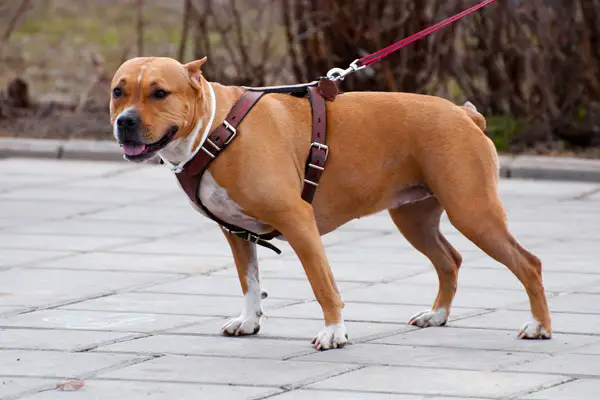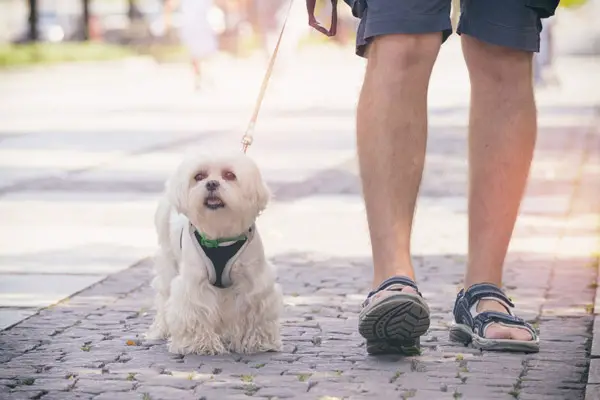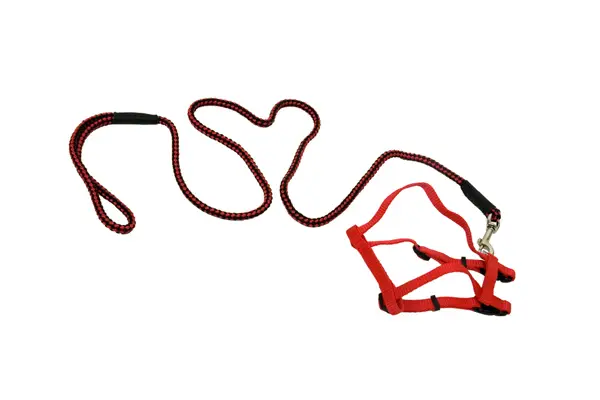
A pet harness is a webbing of straps that loop nearly around the torso of your pet and is fastened together through side release buckles. Some dog owners choose to put their pooches in harnesses rather than a collar. A harness has many benefits to your dog, such as helping to distribute weight evenly across your dog’s chest and securing your dog during travel.
A dog harness is a safer and more comfortable option for your pooch compared to a traditional dog collar when appropriately used. It is also a great tool to use when leash training your dog. It comes in different styles that have features for running, hiking, and driving in the car. But no matter what type of dog harness you buy, it is essential that it fits your dog correctly. Knowing which harness you need to use for specific activities and how to put it on your dog properly are the first two crucial steps.
Many dog owners think they know how to put a dog harness. Unfortunately, the majority of pet parents do not do it right. This can result in the dog getting loose or, worse, injured. In this article, we will talk about how to ensure your dog is comfortable with using a harness and how to fit a dog harness correctly.

Getting Your Dog Used To The Harness
If you think that a dog harness is a complicated contraption, then imagine how scary it can be to your dogs. Especially when they see it for the first time. Therefore, it is a good idea to make your pooch comfortable before you begin putting the harness on your dog. There are a few things you can do.
To begin with, let your dog smell the harness so your dog can get familiar with it. You can also place treats on the harness and let your pooch eat the treat off it. Another thing you can try is touching the dog with your harness and showing that it is not something scary. You can do this by praising your dog every time he or she comes in contact with it. You should also buckle and unbuckle the clips around your dog, so he or she does not get spooked by it.
If your dog doesn’t like wearing a harness, it might be because your pooch is sensitive on the areas being touched. A simple solution to this is to pet and stroke your dog on the regions that the harness will be touching. Some dogs take a few weeks to get used to a harness. If he or she nips at you or backs away while you are trying to put the harness on your pooch, then you might want to slow down and wait until your dog is feeling more comfortable. This is true especially if you are using a puppy harness.

Guide On How To Put A Dog Harness
There are many types of harnesses on the market. But the two main ones are step-into and over-the-head harnesses. You need to make sure that you properly measure your dog for a harness to ensure that they fit into the one you purchase. Below is a step-by-step guide on how to put each type on your pooch.
Step-Into Dog Harness
- Prepare it: The first thing you need to do is unbuckle the dog harness and lay it flat on the ground. You need to be able to see the straps forming two triangles, and the buckles should be on top of the D-rings.
- Lead your dog: Walk your furry friend over the harness. Make sure that each front paw is placed in either of the two triangular loops. Follow the instructions if the harness indicates which loop should match with each paw.
- Put it on: Pull the harness up and around your dog’s chest. Lastly, buckle it over the side or on your pet’s back.
Over-The-Head Dog Harness
- Open the buckle: After doing so, slip your dog’s head through the neck hole. If you are not sure which one it is, look at the instruction pamphlet that came with the harness. Although most overhead harnesses have similar concepts, some brands add their own into the design, so the process might differ slightly.
- Check the D-ring: The D-ring should be positioned on your dog’s back or chest, depending on the type you have.
- Put it on: Slip the harness over your dog’s head and clasp the side straps together.
Conclusion
Out of the two types, over-the-head harnesses are simpler to put on your pooch. Many dog owners find it hard to make their pets cooperate when putting them in step-in harnesses. Therefore, it is recommended that you start with an over-the-head harness so you and your both can get comfortable with using a harness quicker and easier.
